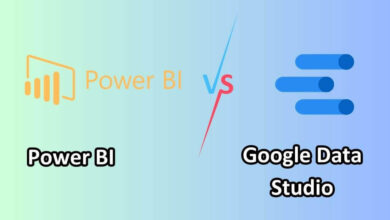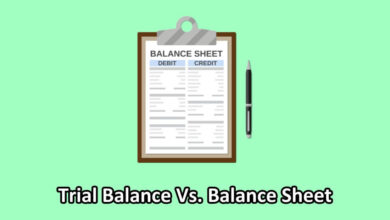I am sure that you have come across the terms “depreciation” and “amortization” in your business management courses or accounts. You might have also come across these terms in your day-to-day dealings with your accounts. Whether or not it’s a technical term, the word “depreciation” will always make one think of something that is slowly being wasted away. Similarly, “amortization” means the gradual wearing out of an asset over a period of time due to its use. Let’s find out more about them!
What Is Depreciation?
An accounting method called depreciation is used to spread out the cost of a tangible item over the course of its useful life. Tangible assets are those that have a physical form and can be used in the production or supply of goods or services. Examples of tangible assets include machinery, equipment, vehicles, buildings, and furniture.
The depreciation expense is recorded on the income statement as a reduction in revenue. It is important to note that depreciation is a non-cash expense, which means that it does not require an outlay of cash to record the expense.
The amount of depreciation expense recorded each period is based on the depreciable basis of the asset and the estimated useful life of the asset. The depreciable basis is the original cost of the asset less any salvage value. The salvage value is the estimated amount that the asset could be sold for at the end of its useful life.
The estimated useful life of an asset is the number of years that the asset is expected to be used in the business. The useful life can be expressed in terms of months, years, or hours of use. Depreciation methods are used to allocate the depreciable basis over the estimated useful life in a systematic and rational manner.
What Is Amortization?
Amortization is a technique for calculating the loss in long-term fixed intangible asset value brought on by the passing of time; it is used to determine the assets’ diminished value. In other words, amortization is an accounting method of allocating the cost of an intangible asset over its expected useful life.
Intangible assets are non-physical assets such as patents, copyrights, and trademarks. Like depreciation, amortization expense generally begins when the asset is placed in service. For example, if a company acquires a patent on January 1, 2019, for $100,000 and expects it to have a 20-year useful life, it would record $ 5,000 of amortization expenses each year for 20 years.
The intangible asset is still recorded on the balance sheet at its historical cost. However, over time, as the amortization expense is recognized, the carrying value of the asset will decline.
Depreciation Vs Amortization(Comparison Table)

Depreciation Vs Amortization – Main Difference
The main difference between depreciation and amortization is that depreciation is used for allocating the cost of a depreciable/tangible asset over its expected useful life whereas amortization is used for allocating the cost of an intangible asset over its expected useful life. The concept of amortization is similar to depreciation in that both are methods for allocating the cost of an asset over its expected useful life.
Seven Key Differences Between Depreciation And Amortization
When it comes to business accounting, the terms “depreciation” and “amortization” are often used interchangeably. However, there are some key differences between the two that you should be aware of.
- Depreciation is used to account for the wear and tear of physical assets, while amortization is used to account for the intangible benefits of certain assets over time.
- Secondly, depreciation is typically calculated on an annual basis, while amortization is often done on a monthly basis.
- Depreciation’s main goal is to spread an asset’s cost over its anticipated lifespan. As opposed to amortization, which concentrates on capitalizing the cost of an item over the course of its useful life.
- Depreciation is recorded as an expense on the income statement, while amortization is recorded as a contra-asset on the balance sheet.
- Finally, depreciation is typically considered a non-cash expense, while amortization may be either a cash or non-cash expense.
Conclusion
As you can see, there are some key differences between depreciation and amortization. For physical assets, depreciation is employed, whereas amortization is used for intangible assets. Depreciation is a non-cash expense, while amortization is a cash expense. When an asset is sold, any remaining depreciation or amortization must be reversed in the accounting records. And finally, depreciation is recorded on the income statement, while amortization is recorded on the balance sheet.



